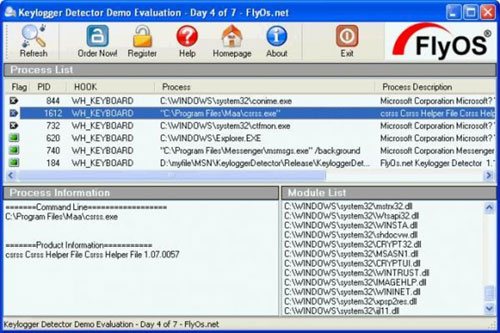

- HOW TO DETECT KEYLOGGERS IN EMAIL HOW TO
- HOW TO DETECT KEYLOGGERS IN EMAIL INSTALL
- HOW TO DETECT KEYLOGGERS IN EMAIL ANDROID
- HOW TO DETECT KEYLOGGERS IN EMAIL SOFTWARE
Once you know that, then design threat scenarios and test cases against those. I believe you need to take a step back and decide what kind of security policy/implementation you want (what is your risk tolerance). Fake Phishing attacks like what you describe are designed to test your resilience against targeted attacks antivirus programs are worthless against targeted attacks. If you want to test your reslience against opportunistic attack, you need a different test strategy. Antivirus is designed to reduce the likelihood that you'll be the victim of opportunistic attack. Third, let me combine those two observations. I don't have the current numbers, but the majority of viruses in the wild are common viruses. But ultimately 90% of the antivirus products are going to be adequate against 90% of the attacks you find. There are sites that publish comparitive research. If your goal is to test the effectiveness of your antivirus, then I would suggest you rely on other people's research. Second, I'm not sure I understand why you're looking at antivirus. (I can't find a link to one, but if you have a legitimate need, I'm confident that you'll be able to find one). If you need to go beyond that, you could include one of the sample viruses used by antivirus companies to test their products.
HOW TO DETECT KEYLOGGERS IN EMAIL INSTALL
The program should never be used for illegal purposes, but you can install it on a computer that you own legally. If you see texts like these, don’t click on the link and immediately delete them. A text will be sent to the target phone using a strange code or link.
HOW TO DETECT KEYLOGGERS IN EMAIL ANDROID
In addition, it will send you screen shots of the computer where it is installed. Android keyloggers are often installed via text message. I believe that a sufficient payload would be a redirect to a page containing your company's policy. Can Keyloggers Be Sent Through Email By sending a keylogger via email, you can keep an eye on your computer remotely. I believe that a keylogger is the wrong "mission" or payload to deploy in this campaign. You're trying to change user behavior by providing a clear feedback cycle this is a technique which has been proven to be effective. RSA was brought down because an administrative assistant reached into a sequestered email message and clicked on a link. It doesn't matter what security controls you deploy if your users aren't at least tacitly compliant. I'd like to take a step back and examine the broader issues - because sometimes the answer to a question isn't really the answer you're seeking.įirst, I must respectfully disagree with opinion. It could be a keylogger.I think that your question (Will Antivirus detect keyloggers?) has been answered. In case we see a process called Windows Startup Application (1) or similar, it means that someone may be within our team. Is there something running that it shouldn’t? A very common clue is when we find the Windows Startup application process duplicated. But it can also show us processes that are foreign to us. Tools such as the browser or any application that we are using will appear. The simplest way to detect a keylogger is to download the latest version of anti-malware software. It may come from a seemingly innocent website that’s actually stuffed with malware, a strange email attachment, or a risky program. There it shows us all the programs and processes that are running. Like other types of malware, malicious keyloggers are installed on your system when you download something sketchy. One of the options is to use the task manager. Luckily we can take into account some actions in Windows for this. I suspect that the computer I use at work probably has a keylogger installed. If we are victims of this problem and before it can act we have found that it is present in our system, we can avoid compromising our passwords.
HOW TO DETECT KEYLOGGERS IN EMAIL HOW TO
It is very important that we know how to detect these types of threats so that they do not affect us. They can collect our keys for a wide variety of services such as email, applications, social networks, online services … In addition, we must indicate that not only passwords, but also bank account keys or any PIN that we use.
HOW TO DETECT KEYLOGGERS IN EMAIL SOFTWARE
Therefore, we can say that a keylogger is software created maliciously to record keystrokes.


 0 kommentar(er)
0 kommentar(er)
